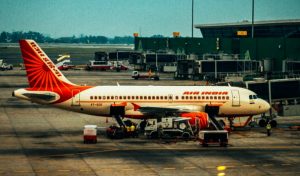Safest Means of Transportation: You may want to know what the safest means of transportation is at any particular time if you travel regularly. Anyway, if that’s the case, you’ve made the best decision possible. The purpose of this article is to respond to the following question: A set of networks, infrastructures, vehicles, and operations is referred to as a “means of transportation.” These modes of mobility include walking, the road system, rail, ship transportation, and modern aviation. Various modes of transportation have developed over time; in general, four (4) types of transportation are mentioned below.
Recommended: Fastest Means of transport in the world
1. Road transport: Road transport is a mode of transportation that involves the use of motor vehicles (cars, trucks, buses, bicycles, and trucks) in all regions of the world. According to size and function, different types of roads exist; some are tarred, while others are not. The contemporary roadways that connect large cities are the best of these roads.

When compared to other means of transportation, road transport is more flexible. It is both less expensive and speedier. For transporting commodities over short distances, road transport has a large capacity. One of the biggest drawbacks of this mode of transportation is maintenance.
2. Railway transport: Railways were built throughout the nineteenth century’s industrial revolution, partially for political reasons and partly for commercial reasons. They were created in numerous countries specifically to penetrate distant regions and build political unity. The provision of reliable services is a major advantage of railway transportation. It can transport large and bulky cargo, and it is also highly affordable, safe, and comfortable for individuals traveling great distances.
3. Water transport: Water transportation is critical because it is the most cost-effective method of delivering large items across great distances. Inland water transport and ocean water transport are the two main types of water transport around the globe.

The system of transportation through all navigable rivers, lakes, and man-made canals is known as inland water transport. Ships and barges use many huge rivers in different parts of the world for transportation.
Also see: Slowest means of transportation in the world currently
4. Air Transport: Air travel is the most recent kind of transportation; it was first introduced in 1903 and became a full mode of transport for people and commodities in the 1930s. After World War II, the biggest air transportation began (WWII). Both domestic and international flights can be taken using this kind of transportation.

What are the safest means of transportation?
Flying, on the other hand, is the safest means of transport for a variety of reasons. When compared to other modes of transportation (auto, rail, bus, and motorcycle), flying is the safest. The death rate for flying is 0.07 deaths per billion passenger miles, according to statistics.
The charges are 0.11, 0.24, 0.43, 7.28, and 212.57, respectively, for buses, transit rail, trains, vehicles, and motorcycles. If you’re frightened of flying, these statistics should put your mind at ease. Continue reading to learn more about which mode of transportation is the safest. I didn’t merely answer the question. I discussed why flying is the most trustworthy mode of transportation.

Recommended: Advantages and Disadvantages of being Famous
Why Air Transport Is Considered The Safest
1. Lower crash rate: This can be explained simply. A person who dies while driving to an airport is significantly more noticeable than one who dies while flying across the nation. This statement encapsulates everything about comparing air travel to driving a vehicle or taking the bus to work.
However, I feel compelled to make a statement. The impact of plane crashes is massive. They are difficult to survive, and they are also extremely expensive. But they are uncommon. It’s not something you come upon every day. Plane crashes are uncommon everywhere in the world
It’s possible that we won’t hear about a plane disaster for a year. This is not possible when traveling by car, however.
Traveling around the world for a month without being involved in a traffic accident is practically impossible. In 2008, the Safety Council compiled a study on the odds-of-dying table. The perils of driving and flying were illustrated on the table. According to the group, the odds of dying in a car accident are one in 98, which is a lifetime risk. For space and aircraft travel, the probabilities were 1 in 7,178. That’ll be all for the rest of my life. The two forms of transportation, as you can see, are very different.
2 Adequate structure and management: Airlines have unique structures that are not found in other modes of transportation. As a result, making mistakes is tough. A proper division of work exists, with individuals in charge of every part of a flight. Their goal is to ensure that flights go off without a hitch and that only qualified people are hired.
The flight crew, air dispatchers, and traffic control can all be found here. Another desirable feature of air travel is that each department keeps an eye on the others. Each department bears responsibility for the safety of flights as well. The pilots and aircraft dispatchers, however, are the ones who carry the brunt of the responsibility.
A pilot cannot just alter altitude or direction on the spur of the moment. Before the final decision, it must pass through each of the three departments. They make swift decisions as well. The decision is routed via multiple departments to avoid errors that could result in a plane crash. Before concluding, each department must consider the pilot’s request as well as any comments from other departments.
Recommended: Which Is Correct in Transit or On Transit? Answered
3. License acquisition for a pilot is challenging: Pilots have some of the most thorough training compared to other occupations or modes of transportation. It’s also worth noting that the majority of the planes’ pilots are former military personnel. As a result, they’ve had to cope with several flight-related problems. I should point out that obtaining a pilot’s license is a difficult task. There is no such need or test in this circumstance, unlike driving a car, where the driver must demonstrate practical ability and no IQ exam is necessary or completed.
To earn a pilot’s license, you must be intelligent, sound, and able to demonstrate practical abilities and more. As a result, before obtaining a pilot’s license, pilots must undergo extensive training. Not only in the United States of America, but in other countries as well. Before you can become a pilot, you must pass a series of exams and screenings. In a nutshell, pilots are well-trained and equipped with the knowledge required to successfully fly a plane.
4. Pilots don’t drive recklessly: The different hazards that can cause a plane accident are well-known to pilots, cabin crew, and other team members. Because there are fines, no one wants to be blamed for causing the problem. To begin with, a plane cannot take off unless it has received clearance. Before the pilot may start flying, it must be judged safe. However, this is not the case with automobiles. Before hitting the road, the driver may not bother to check if the brakes, tires, and other important components are in good working order.
How often do you hear that a pilot is driving dangerously? Isn’t it true? But, when it comes to drivers, I hear this all the time. While flying an airplane, a pilot will not multitask, listen to music, make phone calls to family members, or wave at someone via the glass. Only drivers of automobiles are subjected to this. While traveling, you may notice drivers talking on the phone, listening to music, or waving to a buddy.
Also see: Major Barriers to Effective Communication
5. Airline regulations by the authority: Airline control and regulation are one of the most critical parts of safe flying. Pilots, aircraft emergency responders, and air traffic controllers are three major departments whose operations are not only identified, but also thoroughly investigated. And any wrongdoing might lead to a hefty fine. As a result, errors in air travel are practically hard to detect.
The safety of road travel could be improved if traffic offers could monitor and assess driver activities. Again, the majority of people will receive many tickets for reckless driving each week. In any case, there isn’t any such thing. The Federal Aviation Administration, on the other hand, keeps a careful eye on pilots and other agencies to guarantee that the rules and regulations are obeyed.
6. Improved technology: Aviation technology is progressing at a breakneck pace. The most recent Airbus and Boeing models are packed with safety measures that would put any Volvo or Toyota to shame. Aboard a typical flight, technology is monitoring everything that occurs on the plane, everything that occurs around the plane, and everything that occurs in the other 50 dimensions of time and space.
Recommended: Differences Between Language And Dialect
Conclusion
So, which mode of transportation is the most secure? I’m sure you already know the answer. Without a question, air travel (flying) is the safest mode of transport. When you look at the death statistics of flying vs other kinds of transportation, you’ll realize why. You’ll see that I also talked about why flying is the safest way of transportation. Because of improved technology and effective monitoring and management, air travel is without a doubt the most dependable means of transport. It’s also appropriate for long and short trips.

Edeh Samuel Chukwuemeka, ACMC, is a lawyer and a certified mediator/conciliator in Nigeria. He is also a developer with knowledge in various programming languages. Samuel is determined to leverage his skills in technology, SEO, and legal practice to revolutionize the legal profession worldwide by creating web and mobile applications that simplify legal research. Sam is also passionate about educating and providing valuable information to people.